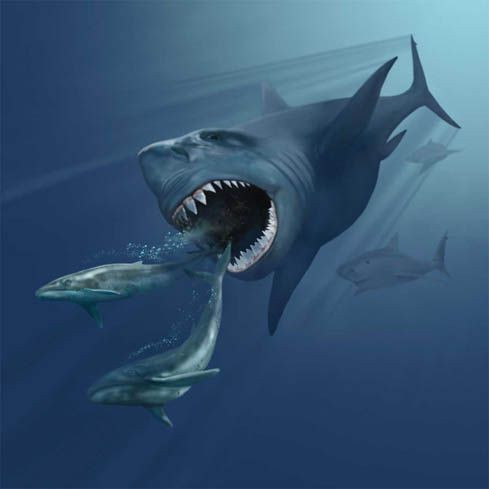Megalodon Size Mystery: Ancient Sharks' Cannibalistic Behavior May Have Helped Them Become Giants
KEY POINTS
- Megalodons grew to be up to 50 feet in length
- The prehistoric sharks were the biggest among the carnivorous or non-planktivorous shark species
- Researchers say a unique behavior called intrauterine cannibalism may have helped megalodons grow very large
The ancient megalodon sharks' predatory behavior inside the womb might have helped them achieve their gigantic size, a new study shows. The shark species grew to be up to 50 feet in length before going extinct about 3.6 million years ago.
In a study published in the journal Historical Biology, a team of researchers explained that most sharks give birth through a method known as ovoviviparity, where the embryos develop inside eggs that remain inside the mother's body until they are ready to be hatched. In some aggressive shark types like lamniform, the early-hatched embryos often eat the unhatched eggs, a behavior called intrauterine cannibalism, the researchers noted. Megalodons belong to the lamniform group.
The ancient sharks are depicted as monstrous predators in many novels and movies like "The Meg." But there is very little information about the species' biological making. While the team says their conclusion is not definite yet, it adds to the many theories that may finally help solve the mystery surrounding the megalodons' colossal size.

"Lamniform sharks have represented major carnivores in oceans since the age of dinosaurs, so it is reasonable to assert that they must have played an important role in shaping the marine ecosystems we know today," Kenshu Shimada, a paleontologist at DePaul University in Chicago and lead author of the study, said in a press release.
Apart from the fact that researchers could only gather information about megalodons based on their teeth remains, these creatures also behaved differently from other similar species. These factors made it harder for experts to know more about megalodons.
The megalodons, formally called Otodus megalodon, are the biggest among carnivorous or non-planktivorous shark species. Other carnivorous sharks like great whites can only grow to up to 23 feet. Ironically, the only species that come close to megalodon's size are plankton-eaters such as the whale shark and basking shark.
"This work represents a critical advancement in our understanding of the evolution of this ocean giant," co-author Martin Becker, also a professor of environmental science at William Paterson University, added in the same press release.
© Copyright IBTimes 2024. All rights reserved.





















